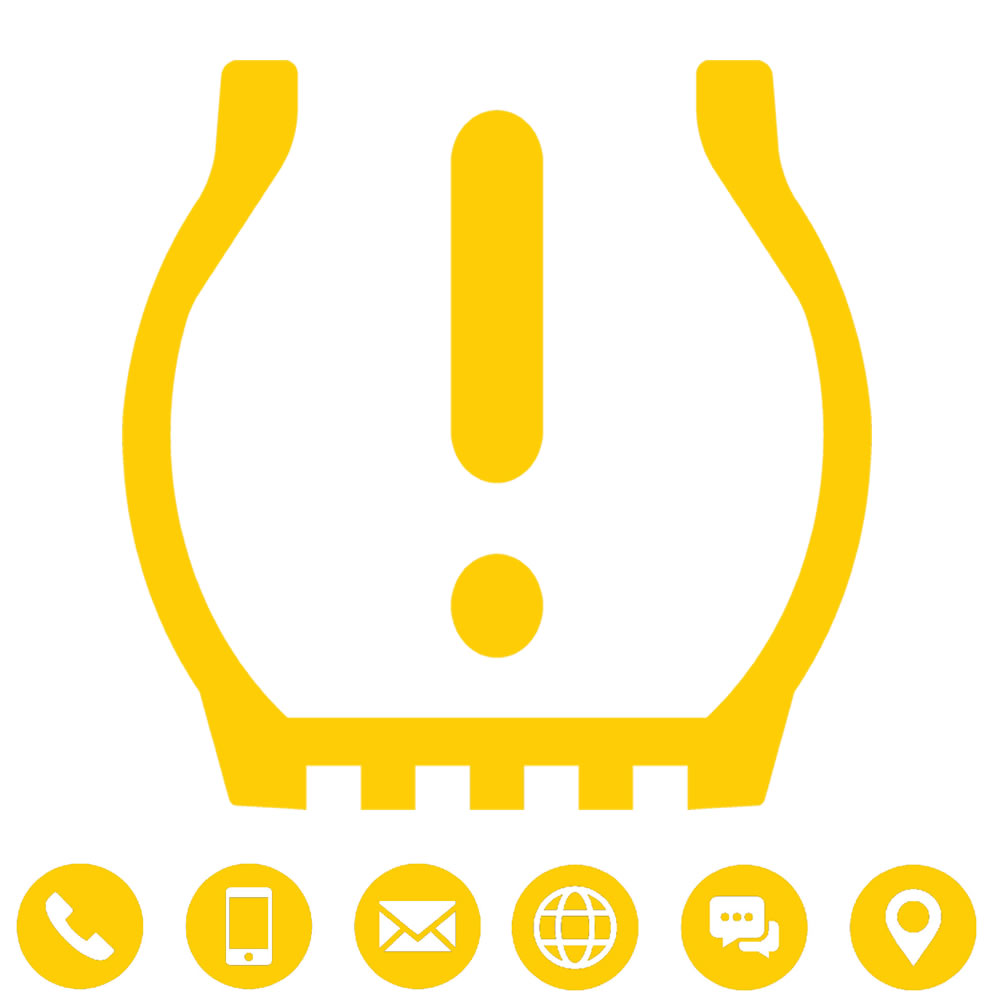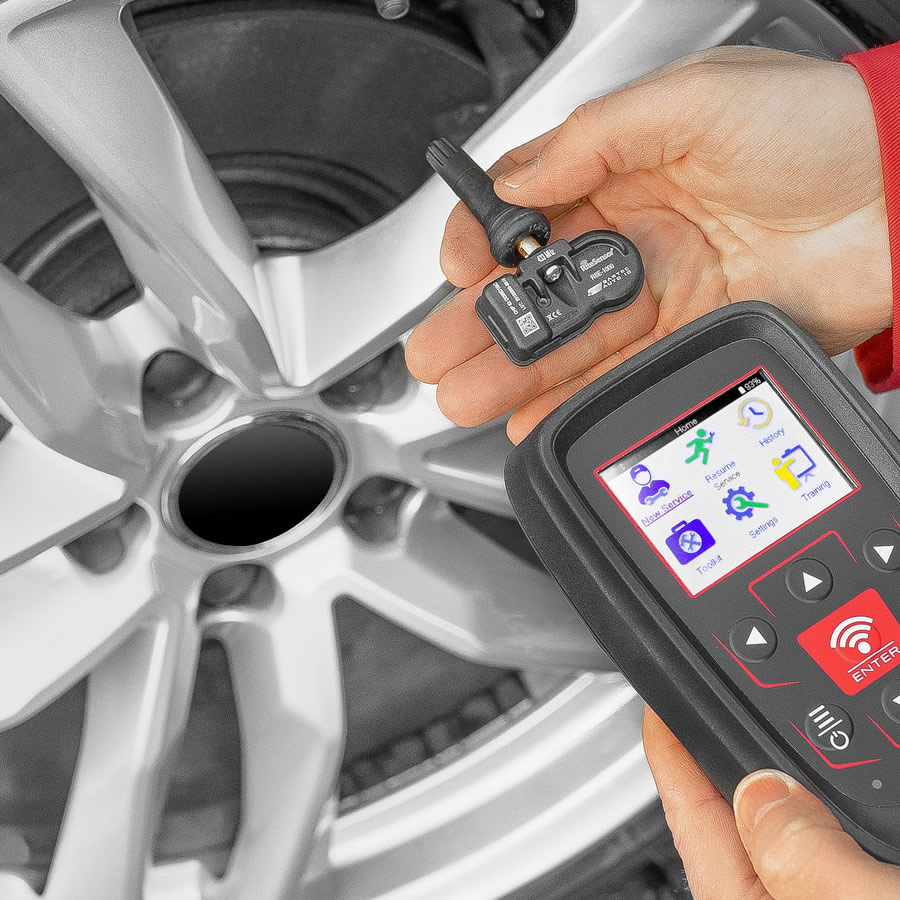TPMS Replacement
TPMS is now Standard in the EU
TPMS or Tyre Pressure Monitoring Systems are now included as standard equipment on many of today's high performance automobiles. Since November 2012 all new registered vehicle models in the EU have to be fitted with TPMS. From November 2014 all newly registered vehicles need to be fitted with TPMS.
TPMS cars use sensors in the wheels to transmit important information such as pressure and temperature to the car's control module (ECM). This information is then displayed on the instrument panel in the form of a display or warning light.
TPMS replacement is called for when the TPMS fails due to mechanical or electrical failure, broken accelerometer, low TPMS battery power or blocked pressure port. One of the most common causes of failure is inappropriate handling during wheel or tyre removal or servicing. The TPMS is an electronic component fitted as part of a heavyweight mechanical process.
The TPMS Desktop system contains comprehensive information on the mechanical and electrical procedure for TPMS replacement for all makes/models/year types going back to the year of their introduction.

Bartec TPMS Replacement Tools
Before attempting to replace a TPMS we advise the use of one our Bartec TPMS tools to establish the need for replacement and the nature of the fault. This may support a warranty claim but will also ensure that the dealer or tyre shop is covered for liability claims. The legal position is that as soon as the dealer breaks down the wheel then he becomes liable and cannot allow the car to be driven away from his shop with the TPMS warning light still on. Many dealers have found that customers will not accept the costs for repair and may attribute any breakage to the dealer if there is no audit trail.
Bartec TPMS tools offer the capability to carry out a TPMS audit of the car and then show the customer the audit results from the screen or download them to a PC and print the audit results to show to the customer so that a cost can be agreed and the go ahead given before work commences. It is important to have a tool which activates the TPMS at the correct power level and decodes only the TPMS in front of the tool (to do this it will need to know the specification of all of the different sensors on the market). This is very important in order to avoid picking up the transmission of other TPMS sensors, key fobs etc. It is important to limit your liability for any problems which occur.
The TPMS tool should be able to decode the transmission from the sensor and display the data. This will enable the technician to establish if the sensor has failed or is not fitted, whether the pressure port on the sensor is blocked, if the part is running at too high a temperature and other diagnostic information which might be included in the specific sensor data (e.g. if there is a low battery condition on the TPMS.
The technician will need to be able to identify whether a TPMS is fitted or not. If the TPMS warning light temporarily lights up on the dash while the vehicle is being started; if tyre pressure is displayed on the dash; or if the Bartec tool can successfully decode the signal coming from the TPMS. The direct TPMS may be attached to the back of the tyre valve or banded to the wheel.
If a sensor proves faulty or is damaged then it will need to be replaced. This requires a new sensor to be fitted and the ECU to be reprogrammed with its unique ID and its position on the vehicle. The procedures for all vehicles are illustrated in the TPMS Desktop which shows service requirements, reset procedures, dismounting/mounting instructions, torque specifications etc for all makes/models and years.

TPMS In Vehicles
Most vehicles manufactured have an in-vehicle relearn mode which enables the vehicle to relearn the TPMS ID's when the tool is used to activate the sensor. Not all vehicles may be placed into a re-learn mode (most Asian and European vehicles do not have this feature) and for these the TPMS tool must have an extra interface to the vehicle OBDII/CANbus to communicate with the vehicle engine management or Control Unit (ECU or EMU) and download the TPMS data.
The tool needs to be able to turn off the TPMS warning light. The tool should ideally display the service kit number and the replacement part number for the TPMS sensor to ensure the correct part is fitted.
The technician should always: refer to manufacturer's specifications for proper torque requirements when replacing nuts and valve cores; use new grommets, nuts, plastic or nickel-plated valve caps and electro-less, nickel-plated valve cores when performing any tyre service; never use a brass valve core or un-plated brass cap with an aluminium TPMS sensor stem. Contact between dissimilar metals can cause galvanic corrosion, which can lead to loss of air pressure. Beware chromium plated dust caps which can weld themselves to the valve stem due to galvanic corrosion. Applying too much torque to remove them can break the valve stem.
Finally when the TPMS replacement procedure is complete it is good practice to do a final audit and print the results out for the customer. This completes the circle for your liability protection (showing the job has been completed professionally) and affirms your technical reputation with the customer. You will need to maintain a record of the repair carried out.
Note: The technician should avoid the use of any liquid or tyre sealant injected into tyres equipped with TPMS as this may block the pressure port and cause malfunction. If evidence of the use of tyre sealant is noted upon dismounting the tyre, it is highly recommended that the TPMS are replaced. It is also very important to remove all residual sealant from the inside of the tyre and rim surfaces prior to re-installing the tyre.